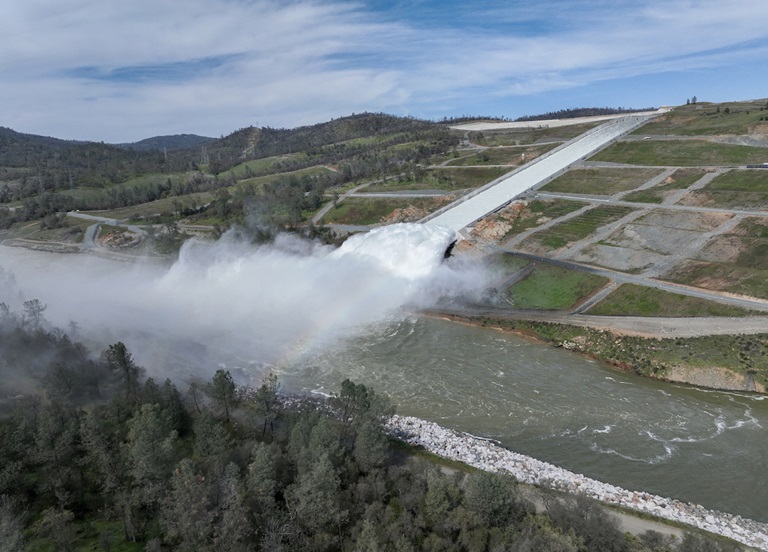Update on Lake Oroville Operations - April 26, 2023
A drone provides an aerial view of a cloud mist formed as water flows over the four energy dissipater blocks at the end of the Lake Oroville Main Spillway. Photo taken March 17, 2023.
The Department of Water Resources (DWR) is increasing releases from Lake Oroville to the Feather River this week due to heavier snowmelt inflows into the reservoir. Flows to the Feather River will increase to 18,000 cubic feet per second (cfs) today with 6,500 cfs flowing through the low-flow channel within the City of Oroville. Releases will further increase to 20,000 cfs on Thursday.
Feather River releases are closely coordinated with the U.S. Army Corps of Engineers and downstream water operators. DWR continues to closely monitor lake inflow levels from spring snowmelt and will adjust releases accordingly.
The information below reflects current reservoir level estimates. Forecasts can change quickly and may affect the estimates provided.
- Current Oroville Reservoir Level: 877 feet elevation
- Current Storage Capacity: 90 percent
- Total Releases to the Feather River: 18,000 cfs; will increase to 20,000 cfs on Thursday
The Lake Oroville reservoir is the largest storage facility in the State Water Project and supports environmental and water delivery needs to 27 million Californians and reduces flood risks to downstream communities. DWR continues to monitor lake levels, weather forecasts, and mountain snow levels to optimize operations for flood control, water storage and environmental protection while allowing for carryover storage into next year.
Future updates will be provided based on operational changes to Lake Oroville releases.
